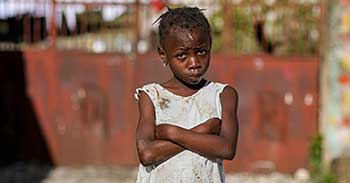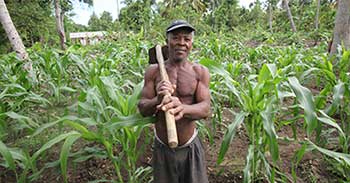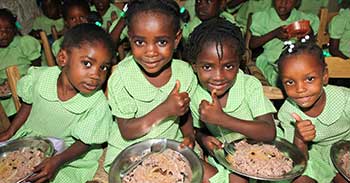At Star of Hope’s school in Manila, Taytay Rizal, there is a huge dance competition each year. It is an “over the top” competition for the age groups represented. All the classes and all the students partake and the prize is a special outing for the winning class or perhaps a party; a big deal when you are simply dirt poor. The kids learn a about dance and production of dance; and the kids who decide not to dance are involved in costumes production and or prop production both categories are “over the top” as well. Usually one child and one teacher take responsibility for the choreography, again “over the top”.
This event gives the school a bit more honorability as the event is seen as a major accomplishment each year and is one of the attributes that makes the school a more popular choice for the community of mostly needy people.
The noteworthy for me after being fortunate to witness this in different years was the magnitude of teamwork to pull it all off; afterword’s your just thinking “and they are just kids!” Joy is a great thing and the dance completion is full of joy from start to finish, joy is radiated from the kids and the staff and the parents from the start of the process well past the end, but nothing compares to the joy you will have as a member of audience, because, it’s over the top! Show me the Joy!
Grade 1: Pearly Shell
"Peraly Shells" was created when Webley Edwards, the host of the world famous radio shoe "Hawaii Calls" put English words to the medley line from locally popular "Pupa A ´O´ Ewa".
Pearly Shell was performed by Aloha Hawaiian kids, honoring the shark goddess in Pearly Harbor which is also the site of ancient Hawaiian fishponds.
Grade 2: Singkil Dance
The Singkil Dance originated from the Maranao people who inhabit the shores of Lake Lanao. The name of the dance means "to entangle the feet with disturbing objects such as vines or anything in your path." It is a popular dance performed during celebrations and other festive entertainment. Originally only women, predominantly royalty, danced the Singkil, which served as either a conscious or unconscious advertisement to potential suitors. A "Muslim dance", the Singkil is in fact secular in nature, performed by the Ummah communities of the Maranao and Maguindanao. Initially, the dance was performed with just one pair of bamboo poles, eventually adopting the use of two criss–cross pairs.
The Kappa Malong also called Sambi sa malong, is also a Maranao dance shows the many of wearing a malong, a simple tabular yet highly functional piece of cloth.
Grade 3; Bulaklakan
This dance is a dance of floral garlands, dedicated to the Virgin Mary during the Roman Catholic celebration of their holy week. It is performed widely during the month of early May. "Bulaklakan" refers to green orchids and other flowering plants. The town of Bulcacan derived its name after bulaklakan because of the natural floral growth in that area.
(Tagalog Regions) During the month of May, it is custom in many parts of the Philippines to celebrate the "Santa Cruz de Mayo", a procession usually followed by a social gathering in the house of the "Hermana Mayor". In some places, the celebration takes the form of folk dances held in front of a provisional alter built by the "Hermana Mayor". "Bulaklakan", a lovely and attractive dance, is danced for this occasion. The girls in this each hold a garland of leaves and flowers attached to wire, bamboo or rattan so that the garland will arch when held overhead.
Grade 4; History of Banaue Rice Terraces (Rice Planting)
Banaue is one if the most visited places in the Philippines. Aside from the terraces, other notable to visit are the remote villages, where many people still live in native huts. The village women also weave colorful clothes, while the men are expert woodcarvers.
Banaue is an adventure, if you really want to get to know the Philippines better the people, the culture, the traditions, the history then Banaue is one the recommended places to go to.
Grade 5; Ati-atihan dance
Ati-atihan means "to be like aetas" or "make believe ati´s". Aetas were the primary settlers in the islands according ti history books. They too are the earliest settlers of Panay Island where the province of Aklan.
Grade 6; Sarung Banggi
Sarung Banggi is a version of the song that came from the album of Pinipikan which means "Isang Gabi" in Bicol Region written by Potenciano B. Gregorio Sr. in Sto. Domingo Albay in 1897. This cultural event has been commercialized as a tourist attraction and instead of traditional street dancing from locals. It features the country´s most colorful displays of ceremony and pageantry participants clothe in bright colored costumes, dance to the rhythm of drums and native gongs.
1st Year High School; Panagbenga Festival
The Panagbenga Festival is held yearly during the month of February. Panagbenga is a Kankaney term for "a season of blooming". It is also known as the Baguio Flower Festival, homage to the beautiful flowers the city is famous for as well as a celebration of baguio´s re-establishment. Since February 1995 it has been held to help Baguio forget the 1990 earthquake that distressed much of the city.
2nd Year High School; Lawiswis Kawayan
Lawiswis Kawayan is a kind of folk song originated from the Visayas Region and become popular in Samar and Leyte. This was fist sang in Tagalog by Rosita Sta. Maria and later made into folk dance wherein the dancers sways just like a bamboo that is tossed to and from by the wind.
Pandanggo sa Ilaw is a popular dance of grace and balance from Mindoro in the Visayas Region. This dance required skill in balancing in three lighted oil lamps, one on the head and at the palms of each hand. The lights of the lamps are said to the represent fireflies that are flattering in the night.
The Tinikling dance is a pre-Spanish dance that involves two people beating, tapping and sliding bamboo poles on the ground and against each other in coordination with one or more dancers who step over and in between the poles in a dance. The name is a reference to birds locally known as tkling, so the term tinikling means tikling-like.
3rd Year High School; Daklisan Festival
La Paz is a fishing village of Laoag City. This is where Daklisan Festival originated. Daklisan refers to fishing. They celebrated Daklisan Festival to thank their patron of La Paz for giving them abundant blessing and for peace and safe voyage. During the festival, the locals of La Pax serve foods in most houses.
La Paz of Laoag City in I locos Norte is a promising eco-tourism destination adding events to their fiesta of dakles or fishing on the river.
4th Year High School; Bendayan, Ragragsakan, Bumayah, Salidsid
Bendayan is a circle dance, popular called Bendian of Ibaloi. This was long known as a dance to celebrate the arrival of successful headhunters. The circular movements of the dance symbolize unity and harmony among the Ibalois.
Ragragsakan dance is an adaption of a tradition in which Kalinga women gather and prepare for a budong or peace pact.
The Kalingga borrowed the beautiful word Ragragsakan from the Ilocano, which means "merriment". The two biggest occasions for a Ragragsakan in a Kalinga Village are for the homecoming of successful head takers and the culmination of peace-pact between warring tribes. In this dance, Kalingga maidens balance labba baskets on their heads, wave colorful tribal blankets and sing short Salidumay songs as they snake through the terrace dikes and skip through breaks in the path. This dance portrays the walk of the industrious Kalingga women, caring water pots on their heads and wearing the colorful hand-woven "blankets of life" around their necks. Their Ealk imitates the climb up the Rice Terraces in the Mountain Provinces of the Philippines.
The Bumayah is an Ifugao dance of thanksgiving to the god Kabunian. In this dance, performed by both men and women, the movements mimic those of a rooster scratching the ground. This joyful dance serves as a prayer of thanksgiving for a beautiful rice harvest.
The Salidsid dance is a folk dance from Cayamba Laguna.














